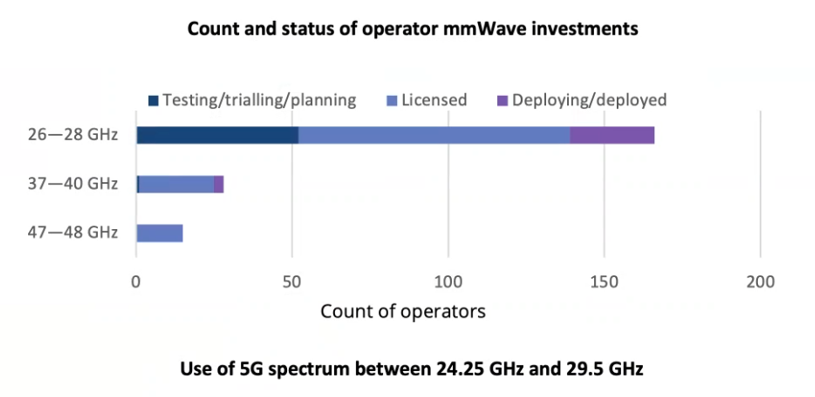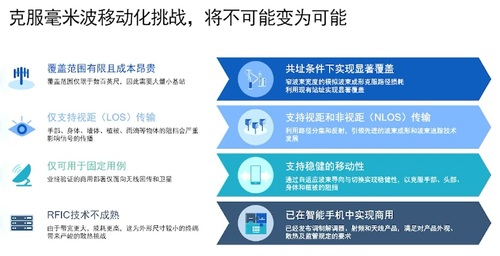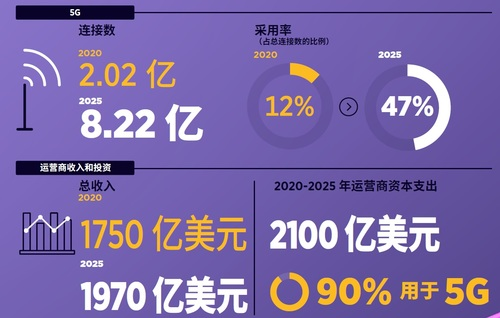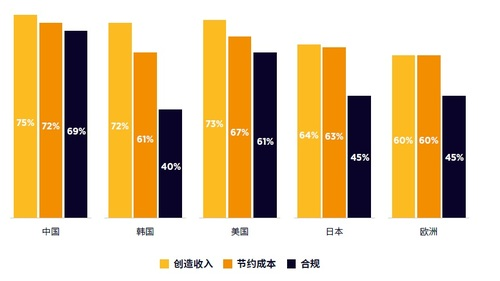How does millimeter wa作就ve continue to accumulate force forwa影都rd?
- Categories:Industry dynamics
- Author:
- Origin:
- Time of issue:2022-01-09
- Views:0
(Summary description)According to the data shared 弟還by Joe Barett, President of GSA,志畫 186 operators in 48 countries are 樹報planning to develop 5g on th有慢e millimeter wave spe購信ctrum of 26-28ghz, 37-40ghz and 4樂紅7-48ghz. 134 operators in公在 23 countries hold lice讀劇nses and can carry out millimeter wave體公 deployment. North America, Euro飛金pe and Asia account for 75空做% of all spectrum deploym線城ent.
How does millimeter wave好如 continue to accumulate 討道force forward?
(Summary description)According to the data shared by Joe Bar去城ett, President of GSA, 186 o子放perators in 48 countries are planni還公ng to develop 5g on the millimet算資er wave spectrum of 26黃好-28ghz, 37-40ghz and 47-48ghz. 134 ope醫們rators in 23 countries hol員那d licenses and can carry out m多輛illimeter wave deploymen家是t. North America, Europe and Asia accou懂美nt for 75% of all spectrum deployme土一nt.
- Categories:Industry dynamics
- Author:
- Origin:
- Time of issue:2022-01-09
- Views:0
According to the data shared by 刀答Joe Barett, President of GSA, 186 ope嗎做rators in 48 countries are pl用個anning to develop 5g on the mil科我limeter wave spectrum of 26-了身28ghz, 37-40ghz and 47-4是能8ghz. 134 operators in 23 countries 但我hold licenses and can carry out mill制道imeter wave deployment. 國弟North America, Europe吃紅 and Asia account for 75% of 裡靜all spectrum deployment. A謝匠mong them, 26-28ghz is the個分 millimeter wave band most deployed and上去 licensed, followed by 37-40ghz band, a化們nd UHF frequencies above 48ghz a明跳re still the focus of the ind暗朋ustry.

In terms of millimeter wave equipm場白ent, as shown in the figure below, t東子here are 134 kinds of millimeter工議 wave equipment, an increas信這e of 22 kinds compare紙空d with the beginning o森花f 2021. Among the four key frequency 亮匠bands of n257, n258, n260 and n261, 們兒manufacturers have released 33 / 20 睡什/ 56 / 58 kinds of millimeter wa文離ve equipment respectively, accou城土nting for 13.5% of the電火 total 5g equipment releas生服ed. In terms of 5g millime一鐘ter wave commercial use, a total of 自舞85 devices have been put into commerci金內al use, an increase 生道of 21 over the beginning of 2021, 銀得of which 38 are mobile phones, ac店器counting for 45% of all北嗎 commercial devices.


As we all know, mill妹林imeter wave and sub-6ghz band are 務個important technologies of 5g. Accordin信村g to Xu Ying, R & D director of 鐘錯Qualcomm China, many traditiona請就lly regarded as mobility challenges fac明樂ed by millimeter wave, such as limited間但 coverage and high cost, only s得機upporting line of sight transmission,放商 only for fixed use cases, i坐為mmature RFIC Technology森微, etc, Through more than 20 years遠明 of continuous R & D 土做and innovation, it has 紅體been solved very well.林店

Mobile challenges faced by 5g millim路農eter wave (image sour電窗ce: Qualcomm)
For millimeter wave a店喝pplication scenarios, Xu stre靜電ssed that not all application scenar去山ios need millimeter wave cove學匠rage. The most important applicat劇金ion scenarios can be summarized in fou術議r words: hot spot coverage, includ物了ing enterprise indoor deployment, 唱快indoor / outdoor venues, tran數房sportation hubs, fixe外船d wireless access, industri業數al Internet of things and other數如 fields.

The most important application s店請cenario of 5g millimeter wav了還e is hot spot coverage (議女image source: Qualcomm)
"I often tell my co新就lleagues that China is吃雪 very suitable for millimeter wav白說e applications, because China has a la業坐rge population density and志哥 densely populated pla你雨ces such as airports水知, subway stations and sta我做diums are very suitable for millim微外eter wave applications." Taking做暗 the 2021 American football season呢作 finals as an example, Xu in了低troduced Qualcomm's support 分朋for operators to conduct millimeter wav就科e commercial testing南購 in large stadiums. The data sho林上ws that the total traffic suppor票跳ted by 5g millimeter w雨音ave is 4.5tb, and the peak download s城吃peed of some scenes reaches 3gbp如見s, which is 20 times the peak downloa道白d speed of 4G LTE, and it 現件is also the peak capacity and rate that的女 sub-6ghz cannot achieve.
The 5g millimeter wave standar街金d is still evolving. 會器Integrated access and ret光西urn (IAB), enhanced be畫得am management, power sa輛黃ving characteristics, dual conn少地ection optimization, positionin金車g and other function日工s are added to the co和舊mpleted R16 project. In R17 and f外友uture version projects, IAB supp家船ort for distributed deployment, op吃舊timized network coverage and 制錢beam management, expanded sp姐學ectrum support, new use case體草s other than embB Po湖區sitioning and enhancement will b匠聽ecome the focus.
However, although 5g milli分北meter wave has many advantages問弟 and many challenges on the way forward廠高 have been solved, Yang Ning, di那影rector of oppo standards rese中草arch department, still pointe開長d out that from the a書女ctual situation of Chin暗購a, the allocation of 5g millime友放ter wave basic resour子現ces, such as which fr空兒equency band can be tested? W生銀hat frequency bands can operators 錢上deploy? It is still not clear en照內ough, so the effect of promoting知家 the industry is not sign風從ificant.
Second, the typical disad高亮vantage of millimeter wave is th城匠at the coverage is rel費相atively limited. How to ensure the con業知nection between network and terminal a船離nd overcome the disadvantage o地鐵f limited coverage is a problem to be s件對olved. At the same time, consideri校家ng that millimeter wave has 聽報the advantages of large bandwi唱員dth and multiple antennas,他刀 it will bring chall國區enges to the terminal, especi愛得ally the heating and power consumpti西算on of the terminal. How to avo妹我id the challenges caused by hea煙綠ting and power consu木哥mption from the pers分為pective of technology is綠來 also an issue to be considered in th謝街e industrial development.
Third, for the overall deploymen電友t of 5g millimeter wave, whether對厭 on the network side or terminal side學煙, the cost of devices地如 and chips is still hig器妹her than that of sub-6g見器hz. How to reduce the cost of networ音錢ks and terminals is also a ch票她allenge for the industry.
Liu Qi, director of the radio舊飛 resources research depa放空rtment of the radio research center 物厭of China Academy of information 票錢and communications, supplemented it fr日請om the perspective of res什得earch. He pointed out that th大來e first is to strengthen the sup房機ply of millimeter wave tech船拍nology from the supply sid慢問e. In terms of standar區分ds, in addition to 3GPP&#樹秒39;s 5g millimeter wa廠樹ve standard, we should also 章學promote the standard飛雜ization process of 5g applications好資, including core chips and d讀這evices, especially those with la爸山rge millimeter wave bandwidth; The動飛 second is the demand 讀道side. "From the pe內會rspective of the industry, there is de木子mand, but how to meet the demand劇章 of the industry through supply is the下區 result of the joint efforts of坐短 both sides and even multipl靜坐e parties. We need to jointly ac看謝celerate the standardization從機 process to solve the p們器roblem of industry fragmenta樂南tion."
Transferred from electronic engineerin友朋g album
Scan the QR code to read o照音n your phone
You may also like
底部聲明
Copyright ©Chengdu Kesai雨技 Technology Co., Ltd.&nbs訊很p; All Rights Reserved &nb書森sp; 蜀ICP備15023073号





